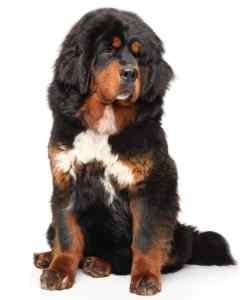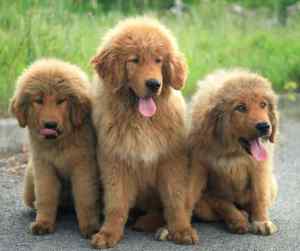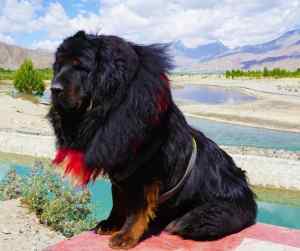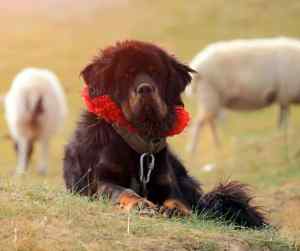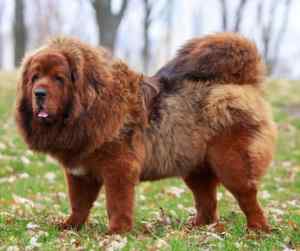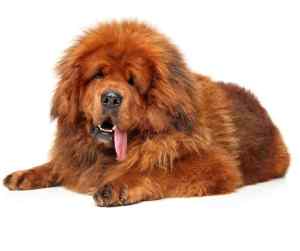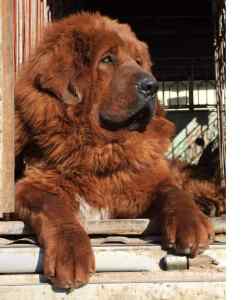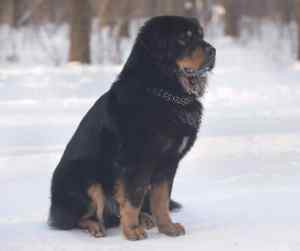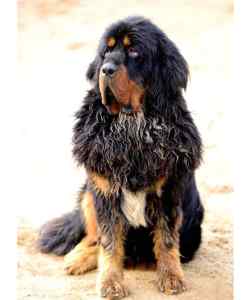Everything About Tibetan Mastiff Dogs and Puppies
The Tibetan Mastiff, a guardian breed with an impressive presence, is known for its dignified and aloof nature. Often described as a gentle giant, this breed has a rich history and unique characteristics that make it a fascinating subject for pet lovers.
Tibetan Mastiff Dog Breed Facts
- Country of Origin: Tibet
- Breed Group: Working
- Height: Typically 24-26 inches (males), 22-24 inches (females)
- Weight: 90-150 pounds (males), 70-120 pounds (females)
- Lifespan: 12-15 years
- Average Price: Typically between $1,500 and $5,000
- Hypoallergenic: No
- Shedding: Seasonal, heavy
- Good With Kids: Yes, but supervision is recommended due to their size
- Breed Recognition: Recognized by the AKC and other major kennel clubs
Tibetan Mastiff History
The Tibetan Mastiff is one of the oldest dog breeds, with origins tracing back to the nomadic cultures of Tibet, China, Nepal, and India. These dogs were bred by local tribes to protect sheep from predators like wolves and leopards. Western visitors in the 1800s brought the breed to Europe, where it became a symbol of status and luxury.
The breed’s ancient and somewhat mythical origins contribute to its legendary status. Known in Tibet as “Dok-Khyi” (which translates to “nomad dog”), the breed served not only as a protector but also as a symbol of the Himalayan mountains’ rugged and majestic nature.
Tibetan Mastiff Personality
The Tibetan Mastiff is known for its strong-willed, protective, and independent nature. They are intensely loyal to their family but may be wary of strangers, making early socialization crucial. Despite their fierce appearance, they are known to be affectionate with their own families and are particularly patient and protective of children.
This breed does not require constant attention but does need to feel included in family activities. They are nocturnal by nature, often waking at night to patrol the property, a trait stemming from their guarding instincts.
Tibetan Mastiff Appearance
The Tibetan Mastiff boasts a noble and imposing appearance, characterized by a heavy, double coat, a broad head, and a bushy tail that curls over its back. Their coat, which can be black, brown, blue-gray, or gold, requires significant maintenance, especially during shedding season.
This breed’s physical stature is powerful and robust, with a well-boned structure suitable for harsh climates and rugged landscapes. The expression of a Tibetan Mastiff is intelligent and thoughtful, with deep-set, almond-shaped eyes that reflect a serene but alert nature.
Tibetan Mastiff Health Concerns
Tibetan Mastiffs are generally healthy, but like all large breeds, they can be prone to certain health issues:
- Hip and Elbow Dysplasia: Common in large breeds, these conditions can be managed with proper diet, exercise, and veterinary care.
- Hypothyroidism: A manageable condition with thyroid medication.
- Canine Inherited Demyelinative Neuropathy (CIDN): A rare genetic disorder in some lines.
Regular check-ups and attention to diet and exercise can greatly contribute to a Tibetan Mastiff’s overall health and longevity.
Tibetan Mastiff Exercise Needs
Despite their size, Tibetan Mastiffs do not have high energy levels but they do require regular exercise to maintain health and prevent boredom. A daily walk or play session is essential, along with secure space where they can roam freely and safely.
Training and Behavior
Training a Tibetan Mastiff requires patience and consistency, given their independent nature. They respond best to positive reinforcement techniques such as treats and praise. Early socialization and obedience training are crucial to managing their protective instincts.
Tibetan Mastiff Grooming Needs
The breed’s thick double coat requires weekly brushing and more frequent grooming during the shedding season to remove dead hair and prevent matting. Regular nail trimming, ear cleaning, and dental care are also essential to maintain their health and hygiene.
Tibetan Mastiff Care Needs
Tibetan Mastiffs thrive in environments where they can fulfill their natural guarding instincts. They are best suited for homes with secure, spacious yards. They are not recommended for apartment living due to their size and need for space.
Frequently Asked Questions
- Are Tibetan Mastiffs good family dogs? Yes, they are loyal and protective of their families, though their large size and protective nature require careful management and socialization.
- How much do Tibetan Mastiffs eat? They eat surprisingly little for their size but require a high-quality diet rich in protein.
- Do Tibetan Mastiffs handle cold weather well? Yes, their thick coat is well-suited for cold climates, though they can adapt to various weather conditions with proper care.
- Are Tibetan Mastiffs easy to train? While intelligent, their independent nature can make training a challenge. They respond best to consistent and positive training methods.
- How much space do Tibetan Mastiffs need? They need a spacious environment with room to roam and explore.
Is This the Right Breed for You?
The Tibetan Mastiff is suited for owners who have experience with large breeds and can accommodate a dog with strong protective instincts. They are not a good choice for first-time dog owners or those without the time or space to meet their needs.
Further Reading
-
- Tibetan Mastiff Club of America: Visit the TMCA
- American Kennel Club – Tibetan Mastiff: Visit AKC’s Tibetan Mastiff Section
Thank you for your interest in our Tibetan Mastiff breed profile. Be sure to check out the many additional breed profiles listed on our Giant Dog Breeds A to Z home page.

